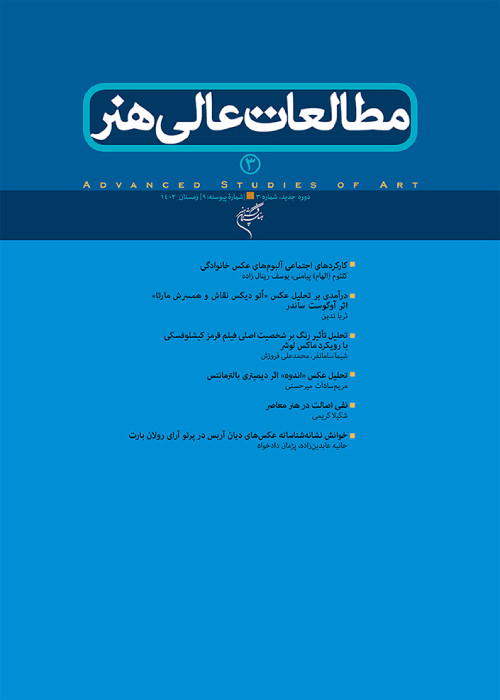Consideration the Role of Copy, Imitation and Forgery in the Authenticity of Painting work
The real art is supposed to be original; actually authenticity of artworks always play important role in understanding of art. Therefore the work which is a simple copy, could not consider as a valuable artwork. Besides, imitation and forgery can not reflect the authenticity of the art work, since forging in definitions indicates the absence and negation of value. Forgery’s meaning determines only by referring to the notion of authenticity, and because it is intended to deceive in this action, it is in contradiction with the meaning of authenticity. This research describes some of the features of copy, imitation and forging in relation to the concept of originality. It also answers the question of whether the artist can create original artwork by copying a painting work or not. According to the studies, copying in contemporary art is a new form of art that appears in different forms. For example it changes in content or appearance of the work, and if the expression of new ideas is presented in the view of contemporary artists, so that it can be an original work. In spite of, the action of forgery intends to deceive people but if it preserves the originality and authenticity of the earlier works, it can be considered a genuine work of art. Concerning the concept of copying in the contemporary world, may not be possible to exactly determine. On the other hand, due to the ability of artists to access the Internet and the advancement of technology distinguish between impact and coping has also been issue. As many arts resulant each other, it should be consider that visual arts sometimes causes similarities between the images two artists (in terms of ideas or visual elements), which are similarity in some cases are inevitable because in many resemblances, the artists did not know the images of each other. The problem of similarity seems to always be and will be, and sometimes it would not be considerd copy. Copying is not primarily forgery, since copying of the art works has always existed in the history of art which importance should not be ignored because the tradition has pursued positive goals, for example, educating students and accessing famous and valuable works before the invention of the camera. In conclusion, If a new ideas is presented in the view of the contemporary artist, in such a way that authenticity be considered, copying has not purpose to deceive the audience and the originality of the earlier works can be considered a genuine work of art.Therefore, in the present article, it has been tried to mention the role of imitation and forgery concepts separately by introducing samples of some artists’ works. Research methodology is descriptive analytical method with library studies and using Internet resources.
Copy , Imitation , Forgery , authenticity , painting work
- حق عضویت دریافتی صرف حمایت از نشریات عضو و نگهداری، تکمیل و توسعه مگیران میشود.
- پرداخت حق اشتراک و دانلود مقالات اجازه بازنشر آن در سایر رسانههای چاپی و دیجیتال را به کاربر نمیدهد.



